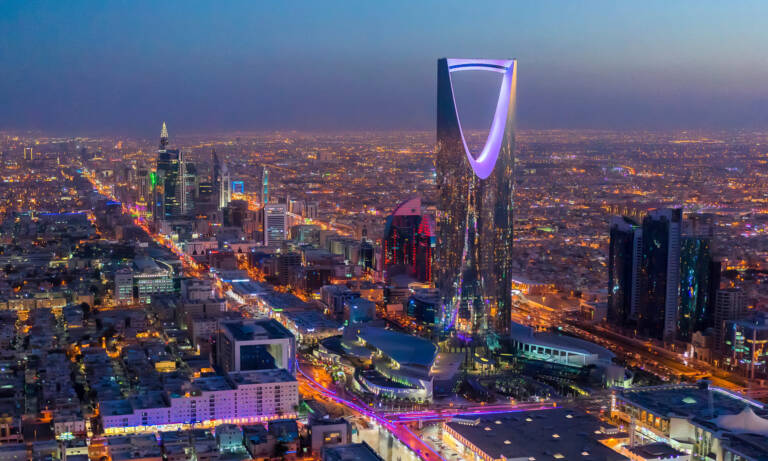Saudi Arabia needs to tighten its purse strings a bit

Last year, Saudi Arabia's sovereign wealth fund became the world's largest investor , accounting for a quarter of the $124 billion that sovereign wealth funds have invested in total.
Saudi Arabia has spent big both abroad and at home: it is home to the world's megaprojects, such as the futuristic $500 billion Neom project and a new airline, among others. Some projects appear excessive and unrealistic to many, while others promise even interesting returns.
As a result, last year, the Public Investment Fund's liquidity and treasury assets rose from more than $105 billion in 2022 to about $37 billion as of September, according to official Saudi data cited by the Wall Street Journal this week . It is increasingly difficult to keep up with all the megaprojects, and the price of oil remains stuck at around $80 a barrel.
Saudi Arabia has done its best to support oil prices and continue financing the ambitious Vision 2030 program, Crown Prince Mohammed's plan to transform Saudi Arabia into a diversified economy. The money cannot come from anywhere else other than oil because, for now, diversification has not yet generated adequate flows. The kingdom is becoming ever thinner.
Perhaps the decline in sovereign wealth fund money was one reason Saudi Arabia announced earlier this month that it would cancel an oil production capacity expansion project. Energy Minister Abdulaziz bin Salman cited plans to redirect investment to other areas of Aramco's business as one of the reasons for the decision and the intention to invest more in the energy transition, but the decision risks reducing the only real source of financial flows for the Kingdom.
Bin Salman also pointed out that thanks to current production curbs, there is a rather soft buffer of around 3 million barrels of spare capacity in case supply suddenly tightens elsewhere. But whether the Saudis will actually use the capacity buffer in the event of a supply disruption is another question. When you're neck-deep in projects whose total price tag exceeds $1 trillion , it would be inadvisable to let a good supply disruption go to waste.
Earlier this week, Aramco raised the latest warning about the state of global oil production capacity. We are losing 6 million bpd of production each year due to natural depletion and poor reserve replacement behavior. This has led to such a drastic drop in spare production capacity that it now equates to 3% of global demand,” said the company's chief financial officer.
The Saudi state energy company has warned for years that the global oil industry needs to invest more in new exploration and future production, but the pressures of the transition have discouraged much of this activity, leading to the current situation where, if OPEC's forecasts on demand are accurate and not those of the IEA, it's a time bomb destined to explode.
When that happens, Saudi Arabia will finally get the oil price it needs to continue spending billions to transform an oil-centric economy into a diversified one. The question is how long will he have to wait to detonate the bomb, what will he do in the meantime, and whether this bomb will actually explode, or will it turn out to be a kind of firecracker. For now, it appears the Saudis are turning to the debt markets. Last year, the Public Investment Fund twice issued a $5.5 billion bond, moreover green, in February, and a dollar-denominated sukuk in two tranches for a total of 3.5 billions of dollars.
Saudi Arabia also issued a $12 billion bond in January this year, which was heavily oversubscribed, with orders reaching $30 billion.
Aramco will also issue debt this year, and while the size of the offering has not yet been disclosed, the company will seek longer maturities, its CFO told Reuters. Ziad Al-Murshed said Aramco also plans to sell shares. Furthermore, it is possible that this issue is consistent with the precepts of Islamic finance.
Debt is certainly a way to continue financing the kingdom's transformation projects. With the prospect of a rate cut on the horizon, debt markets will start to look much more attractive than they have in the past couple of years. More loans could come.
Meanwhile, a rise in oil prices could also come if projections of much weaker US production growth prove true. Originally, the basis for these projections was the latest monthly trend in production increases, which indicated a slowdown.
However, a series of major acquisitions in the sector last year could impact production trends as shale production becomes concentrated in fewer hands. If prices are not to the liking of those with their hands in the dough, production will not grow as much as last year, until prices rise to more satisfactory levels.
Saudi Arabia has many big plans. The WSJ report cites projects such as the production of electric vehicles, a new e-sports and video game industry, and a major and expensive promotion of local soccer. These plans need large financial resources to have a chance of coming to fruition. And the kingdom is ready to do everything to realize these projects.

Thanks to our Telegram channel you can stay updated on the publication of new Economic Scenarios articles.
The article Saudi Arabia needs to tighten its purse strings a bit comes from Economic Scenarios .
This is a machine translation of a post published on Scenari Economici at the URL https://scenarieconomici.it/larabia-saudita-deve-chiudere-un-po-i-cordoni-della-borsa/ on Mon, 26 Feb 2024 09:00:08 +0000.
